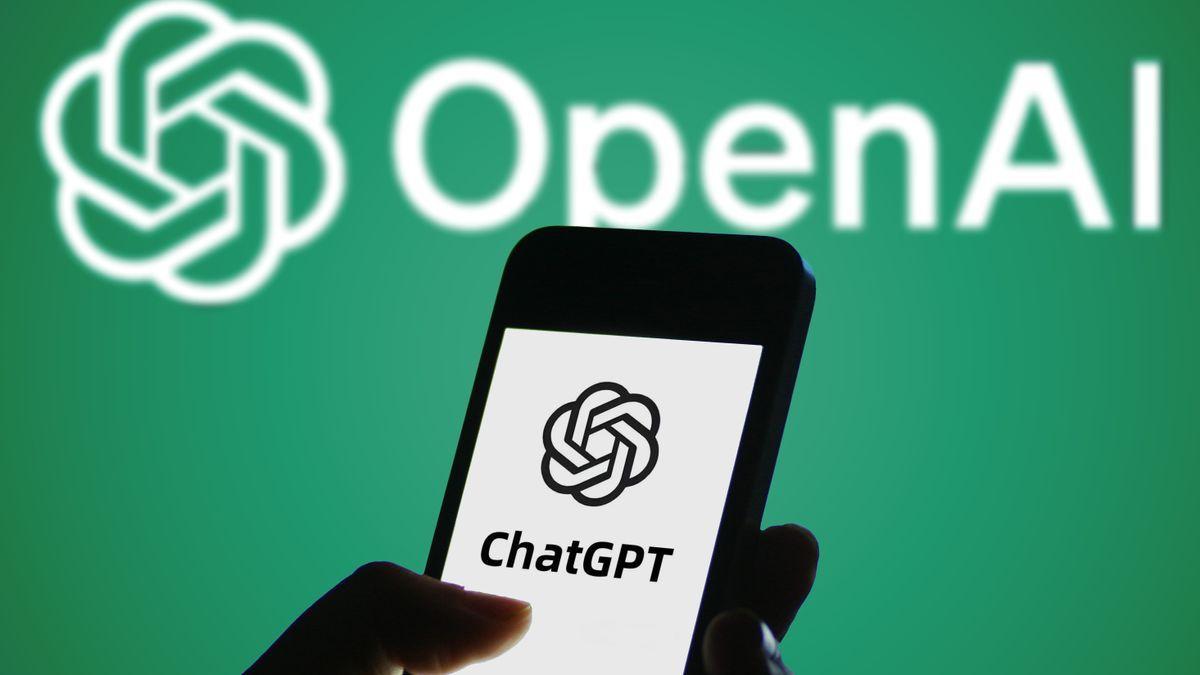SandboxAQ Releases Massive AI-Generated Dataset to Accelerate Drug Discovery
8 Sources
8 Sources
[1]
Nvidia-backed AI startup SandboxAQ creates new data to speed up drug discovery
SAN FRANCISCO, June 18 (Reuters) - SandboxAQ, an artificial intelligence startup spun out of Alphabet's Google and backed by Nvidia (NVDA.O), opens new tab, on Wednesday released a trove of data it hopes will speed up the discovery of new medical treatments by helping scientists understand how drugs stick to proteins. The goal is to help scientists predict whether a drug will bind to its target in the human body. But while the data is backed up by real-world scientific experiments, it did not come from a lab. Instead, SandboxAQ, which has raised nearly $1 billion in venture capital, generated the data using Nvidia's chips and will feed it back into AI models that it hopes scientists can use to rapidly predict whether a small-molecule pharmaceutical will bind to the protein that researchers are targeting, a key question that must be answered before a drug candidate can move forward. For example, if a drug is meant to inhibit a biological process like the progression of a disease, scientists can use the tool to predict whether the drug molecule is likely to bind to the proteins involved in that process. The approach is an emerging field that combines traditional scientific computing techniques with advancements in AI. In many fields, scientists have long had equations that can precisely predict how atoms combine into molecules. But even for relatively small three-dimensional pharmaceutical molecules, the potential combinations become far too vast to calculate manually, even with today's fastest computers. So SandboxAQ's approach was to use existing experimental data to calculate about 5.2 million new, "synthetic" three-dimensional molecules - molecules that haven't been observed in the real world, but were calculated with equations based on real-world data. That synthetic data, which SandboxAQ is releasing publicly, can be used to train AI models that can predict whether a new drug molecule is likely to stick to the protein researchers are targeting in a fraction of the time it would take to calculate it manually, while retaining accuracy. SandboxAQ will charge money for its own AI models developed with the data, which it hopes will get results that rival running lab experiments, but virtually. "This is a long-standing problem in biology that we've all, as an industry, been trying to solve for," Nadia Harhen, general manager of AI simulation at SandboxAQ, told Reuters on Tuesday. "All of these computationally generated structures are tagged to a ground-truth experimental data, and so when you pick this data set and you train models, you can actually use the synthetic data in a way that's never been done before." Reporting by Stephen Nellis; Editing by Leslie Adler Our Standards: The Thomson Reuters Trust Principles., opens new tab Suggested Topics:Future of Health
[2]
5 million synthetic drug models could revolutionize pharma pipelines
"This is a long-standing problem in biology that we've all, as an industry, been trying to solve for," Nadia Harhen, general manager of AI simulation at SandboxAQ, told Reuters. "All of these computationally generated structures are tagged to a ground-truth experimental data, and so when you pick this data set and you train models, you can actually use the synthetic data in a way that's never been done before." To bypass the data bottleneck, SandboxAQ used NVIDIA chips to generate synthetic structures. These are not observed in labs but calculated from real experimental data using the Boltz-1x co-folding model. For each protein-drug pair from public datasets like ChEMBL and BindingDB, the team created five different 3D poses. They then cross-referenced these predictions with computational potency values to retain only the most accurate ones. The final SAIR dataset includes those high-confidence entries. Boosting AI model training with open data AI models like AlphaFold2 and newer systems such as AlphaFold3 and Boltz-2 have made major progress in predicting 3D structures and binding poses. But they still struggle when dealing with unfamiliar proteins or molecules outside their training data.
[3]
This NVIDIA-Backed AI Startup Could Change the Way We Discover New Drugs | AIM
With a $150 million boost in funding, the company aims to integrate advanced AI models with extensive datasets into the drug development process. SandboxAQ, a startup focused on AI that emerged from Alphabet's Google and is supported by NVIDIA, released a large set of data recently aimed at accelerating the identification of new medical therapies by assisting researchers in understanding how drugs attach to proteins. The objective is to enable scientists to predict whether a drug will bind effectively to its target within the human body, Reuters reported. SandboxAQ is a B2B company that provides AI solutions to tackle significant global challenges. Its large quantitative models (LQMs) advance sectors like life sciences, finance, navigation, and cybersecurity. Founded in 2022 as an independent entity from Alphabet, SandboxAQ is backed by notable investors, including T Rowe Price, Eric Schmidt, and Marc Benioff. SandboxAQ raised $150 million from new investors including Google, NVIDIA and BNP Paribas. The investment has increased SandboxAQ's Series E round to $450 million, valuing the startup at $5.75 billion. With this, SandboxAQ's total funding has reached $950 million, with T Rowe Price Associates and Breyer Capital among prominent backers. Google and NVIDIA have been ramping up their investments both internally and externally in quantum computing. This technology uses the concepts of quantum mechanics to execute calculations that exceed the limits of classical computers. Recently, NVIDIA, known for its chip processors that fueled the generative AI surge, has reportedly focused on 'physical AI'. The start-up also launched a new division in 2022 and has created large quantitative models (LQMs) capable of managing vast numerical datasets, executing intricate calculations, and performing statistical analyses. These models are accessible via both first-party and third-party platforms, including Google Cloud, and they have the potential to aid in drug discovery and the development of advanced financial models. The Reuters report stated that, though genuine scientific experiments support the data, it was not obtained from a laboratory setting. Instead, SandboxAQ, which has secured nearly $1 billion in venture funding, created the data using NVIDIA's processors and plans to integrate it into AI models that researchers can use to quickly assess whether a small-molecule pharmaceutical will attach to the targeted protein. This is a crucial question that must be resolved before a drug candidate can progress. For instance, if a medication is designed to obstruct a biological process like disease advancement, researchers can use the tool to forecast whether the drug molecule will likely bind with the involved proteins in that process. "We act as your strategic partner, seamlessly integrated into your programs to enhance your ability to generate novel molecular drug IP and clinical assets. Our focus is on optimising and applying specialised LQM solutions tailored to your specific drug discovery and development needs, while ensuring they are broadly applicable and reusable in future projects, delivering long-term value," the company said on its website. This method represents an emerging sector that fuses traditional scientific computing methods with recent advancements in AI. In numerous disciplines, scientists have long had formulas that can accurately predict how atoms combine into molecules. However, even with relatively small three-dimensional pharmaceutical molecules, the possible combinations become too extensive to calculate by hand, even with today's fastest computers. Thus, SandboxAQ's strategy was to leverage existing experimental data to compute around 5.2 million new, "synthetic" three-dimensional molecules, which were not encountered in the real world but derived from equations based on real-world data. The synthetic data that SandboxAQ is making publicly available can be applied to train AI models that can predict whether a new drug molecule is likely to adhere to the targeted protein researchers are examining. It would do so in a fraction of the time it would take to compute it manually, while maintaining accuracy. SandboxAQ plans to monetise the AI models developed with this data, aiming to achieve results comparable to those obtained from actual lab experiments in a virtual format. "This is a long-standing problem in biology that we've all, as an industry, been trying to solve for," Nadia Harhen, general manager of AI simulation at SandboxAQ, told Reuters. "All of these computationally generated structures are tagged to a ground-truth experimental data, and so when you pick this data set and train models, you can actually use the synthetic data in a way that's never been done before." While large language models (LLMs) have garnered media attention in recent years, SandboxAQ said on its website that they lack the capabilities to precisely simulate the physical world, leading to interesting yet inaccurate and unreliable outputs in the global economy's largest disciplines. The company offers a fully integrated solution that encompasses the entire drug discovery and development lifecycle, ensuring efficiency and precision at every stage. From target discovery and hit identification to lead optimisation and toxicity prediction, the company provides comprehensive support that delivers actionable insights, enabling faster and smarter decision-making. Using its LQM-driven models, SandboxAQ can rapidly analyse multi-modal data to identify the most promising targets and candidates, thereby accelerating drug development.
[4]
Nvidia-backed AI startup SandboxAQ creates new data to speed up drug discovery
SandboxAQ, an AI startup originating from Alphabet's Google and backed by Nvidia, has released a substantial dataset to accelerate drug discovery. Generated using Nvidia's chips, the 5.2 million synthetic three-dimensional molecules aim to predict drug-protein binding. This data, validated by real-world experiments, will train AI models, potentially revolutionising pharmaceutical research by virtually replicating lab results and saving time.SandboxAQ, an artificial intelligence startup spun out of Alphabet's Google and backed by Nvidia, on Wednesday released a trove of data it hopes will speed up the discovery of new medical treatments by helping scientists understand how drugs stick to proteins. The goal is to help scientists predict whether a drug will bind to its target in the human body. But while the data is backed up by real-world scientific experiments, it did not come from a lab. Instead, SandboxAQ, which has raised nearly $1 billion in venture capital, generated the data using Nvidia's chips and will feed it back into AI models that it hopes scientists can use to rapidly predict whether a small-molecule pharmaceutical will bind to the protein that researchers are targeting, a key question that must be answered before a drug candidate can move forward. For example, if a drug is meant to inhibit a biological process like the progression of a disease, scientists can use the tool to predict whether the drug molecule is likely to bind to the proteins involved in that process. The approach is an emerging field that combines traditional scientific computing techniques with advancements in AI. In many fields, scientists have long had equations that can precisely predict how atoms combine into molecules. But even for relatively small three-dimensional pharmaceutical molecules, the potential combinations become far too vast to calculate manually, even with today's fastest computers. So SandboxAQ's approach was to use existing experimental data to calculate about 5.2 million new, "synthetic" three-dimensional molecules - molecules that haven't been observed in the real world, but were calculated with equations based on real-world data. That synthetic data, which SandboxAQ is releasing publicly, can be used to train AI models that can predict whether a new drug molecule is likely to stick to the protein researchers are targeting in a fraction of the time it would take to calculate it manually, while retaining accuracy. SandboxAQ will charge money for its own AI models developed with the data, which it hopes will get results that rival running lab experiments, but virtually. "This is a long-standing problem in biology that we've all, as an industry, been trying to solve for," Nadia Harhen, general manager of AI simulation at SandboxAQ, told Reuters on Tuesday. "All of these computationally generated structures are tagged to a ground-truth experimental data, and so when you pick this data set and you train models, you can actually use the synthetic data in a way that's never been done before."
[5]
SandboxAQ Launches Dataset for Training AI Models in Drug Discovery | PYMNTS.com
By completing this form, you agree to receive marketing communications from PYMNTS and to the sharing of your information with our sponsor, if applicable, in accordance with our Privacy Policy and Terms and Conditions. The SAIR (Structurally Augmented IC50 Repository) is a detailed dataset of protein-ligand pairs with annotated experimental potency data designed to enhance the speed and accuracy of binding affinity predictions, the company said in a Wednesday (June 18) press release. SAIR includes 5.2 million synthetic 3D molecular structures across 1 million protein-ligand systems, according to the release. The SAIR dataset was generated with the use of SandboxAQ's AI large quantitative model (LQM) capabilities and Nvidia's development platform for AI training and fine-tuning, DGX Cloud, the release said. With this dataset, resources can train AI models to accurately predict protein-ligand binding affinities at least 1,000 times faster than traditional physics-based methods, per the release. "This achievement marks a pivotal moment in drug discovery, demonstrating our capacity to fundamentally transform the traditional trial-and-error process into a rapid, data-driven approach," Nadia Harhen, general manager of AI simulation at SandboxAQ, said in the release. "By putting five-plus million, affinity-labeled protein-ligand structures into the public domain, we're handing every scientist the raw fuel to train breakthrough models overnight, setting a new pace for drug discovery." SandboxAQ said in April that it raised over $450 million in a Series E round to support its development of large quantitative models that help enterprises leverage AI to solve scientific and quantitative challenges. The merger of AI with quantum computing could have significant implications for many verticals, Chris Hume, senior director of business operations for SandboxAQ, told PYMNTS in an interview posted in February 2024. "The physical world is defined by quantum mechanics," Hume said. "The more effectively we can understand those interactions and then model those interactions, the more efficiently and effectively you can build predictive models." PYMNTS reported in October that the wave of AI breakthroughs in the medical field was reflected in financial markets, where HealthTech stocks rose 12% in 2024 and AI healthcare companies commanded valuations up to five times higher than their non-AI counterparts.
[6]
Nvidia-backed AI startup SandboxAQ creates new data to speed up drug discovery
SAN FRANCISCO -- SandboxAQ, an artificial intelligence startup spun out of Alphabet's Google and backed by Nvidia, on Wednesday released a trove of data it hopes will speed up the discovery of new medical treatments by helping scientists understand how drugs stick to proteins. The goal is to help scientists predict whether a drug will bind to its target in the human body. But while the data is backed up by real-world scientific experiments, it did not come from a lab. Instead, SandboxAQ, which has raised nearly US$1 billion in venture capital, generated the data using Nvidia's chips and will feed it back into AI models that it hopes scientists can use to rapidly predict whether a small-molecule pharmaceutical will bind to the protein that researchers are targeting, a key question that must be answered before a drug candidate can move forward. For example, if a drug is meant to inhibit a biological process like the progression of a disease, scientists can use the tool to predict whether the drug molecule is likely to bind to the proteins involved in that process. The approach is an emerging field that combines traditional scientific computing techniques with advancements in AI. In many fields, scientists have long had equations that can precisely predict how atoms combine into molecules. But even for relatively small three-dimensional pharmaceutical molecules, the potential combinations become far too vast to calculate manually, even with today's fastest computers. So SandboxAQ's approach was to use existing experimental data to calculate about 5.2 million new, "synthetic" three-dimensional molecules - molecules that haven't been observed in the real world, but were calculated with equations based on real-world data. That synthetic data, which SandboxAQ is releasing publicly, can be used to train AI models that can predict whether a new drug molecule is likely to stick to the protein researchers are targeting in a fraction of the time it would take to calculate it manually, while retaining accuracy. SandboxAQ will charge money for its own AI models developed with the data, which it hopes will get results that rival running lab experiments, but virtually. "This is a long-standing problem in biology that we've all, as an industry, been trying to solve for," Nadia Harhen, general manager of AI simulation at SandboxAQ, told Reuters on Tuesday. "All of these computationally generated structures are tagged to a ground-truth experimental data, and so when you pick this data set and you train models, you can actually use the synthetic data in a way that's never been done before." ---
[7]
SandboxAQ releases AI data to speed up drug discovery By Investing.com
Investing.com -- Artificial intelligence startup SandboxAQ released a large dataset on Wednesday aimed at accelerating drug discovery by helping scientists predict how drugs bind to proteins in the human body. The company, which spun out of Alphabet (NASDAQ:GOOGL)'s Google and has raised nearly $1 billion in venture capital, generated the data using Nvidia (NASDAQ:NVDA)'s chips rather than traditional laboratory experiments. This synthetic data will be incorporated into AI models designed to quickly determine if pharmaceutical molecules will bind to target proteins - a critical step in drug development. SandboxAQ's approach combines traditional scientific computing with AI advancements to address a fundamental challenge in drug discovery. While scientists have equations to predict atomic combinations, the calculations become too complex for even modern computers when dealing with three-dimensional pharmaceutical molecules. The company calculated approximately 5.2 million new "synthetic" three-dimensional molecules based on existing experimental data. These calculated molecules haven't been observed in real-world settings but were derived using equations grounded in real-world data. This publicly released dataset can train AI models to predict drug-protein binding much faster than manual calculations while maintaining accuracy. SandboxAQ plans to monetize its own AI models developed with this data, aiming to achieve results comparable to laboratory experiments but in virtual environments. "This is a long-standing problem in biology that we've all, as an industry, been trying to solve for," said Nadia Harhen, general manager of AI simulation at SandboxAQ, on Tuesday. "All of these computationally generated structures are tagged to a ground-truth experimental data, and so when you pick this data set and you train models, you can actually use the synthetic data in a way that's never been done before."
[8]
Nvidia-backed AI startup SandboxAQ creates new data to speed up drug discovery
SAN FRANCISCO (Reuters) -SandboxAQ, an artificial intelligence startup spun out of Alphabet's Google and backed by Nvidia, on Wednesday released a trove of data it hopes will speed up the discovery of new medical treatments by helping scientists understand how drugs stick to proteins. The goal is to help scientists predict whether a drug will bind to its target in the human body. But while the data is backed up by real-world scientific experiments, it did not come from a lab. Instead, SandboxAQ, which has raised nearly $1 billion in venture capital, generated the data using Nvidia's chips and will feed it back into AI models that it hopes scientists can use to rapidly predict whether a small-molecule pharmaceutical will bind to the protein that researchers are targeting, a key question that must be answered before a drug candidate can move forward. For example, if a drug is meant to inhibit a biological process like the progression of a disease, scientists can use the tool to predict whether the drug molecule is likely to bind to the proteins involved in that process. The approach is an emerging field that combines traditional scientific computing techniques with advancements in AI. In many fields, scientists have long had equations that can precisely predict how atoms combine into molecules. But even for relatively small three-dimensional pharmaceutical molecules, the potential combinations become far too vast to calculate manually, even with today's fastest computers. So SandboxAQ's approach was to use existing experimental data to calculate about 5.2 million new, "synthetic" three-dimensional molecules - molecules that haven't been observed in the real world, but were calculated with equations based on real-world data. That synthetic data, which SandboxAQ is releasing publicly, can be used to train AI models that can predict whether a new drug molecule is likely to stick to the protein researchers are targeting in a fraction of the time it would take to calculate it manually, while retaining accuracy. SandboxAQ will charge money for its own AI models developed with the data, which it hopes will get results that rival running lab experiments, but virtually. "This is a long-standing problem in biology that we've all, as an industry, been trying to solve for," Nadia Harhen, general manager of AI simulation at SandboxAQ, told Reuters on Tuesday. "All of these computationally generated structures are tagged to a ground-truth experimental data, and so when you pick this data set and you train models, you can actually use the synthetic data in a way that's never been done before." (Reporting by Stephen Nellis; Editing by Leslie Adler)
Share
Share
Copy Link
SandboxAQ, an AI startup backed by Nvidia, has released a dataset of 5.2 million synthetic 3D molecules to speed up drug discovery by predicting how drugs bind to proteins.
SandboxAQ Unveils Groundbreaking AI-Generated Dataset for Drug Discovery
SandboxAQ, an artificial intelligence startup spun out of Alphabet's Google and backed by Nvidia, has released a massive dataset aimed at revolutionizing the drug discovery process. The company has generated 5.2 million synthetic three-dimensional molecules using Nvidia's chips, with the goal of helping scientists predict how drugs bind to proteins in the human body
1
.
Source: BNN
The SAIR Dataset: A Game-Changer in Pharmaceutical Research
The newly released dataset, named SAIR (Structurally Augmented IC50 Repository), includes detailed information on protein-ligand pairs with annotated experimental potency data. This comprehensive collection is designed to enhance the speed and accuracy of binding affinity predictions, a crucial step in the drug discovery process
5
.Innovative Approach to Data Generation
While the data is backed by real-world scientific experiments, it was not obtained from traditional laboratory settings. Instead, SandboxAQ utilized existing experimental data to calculate these new, "synthetic" three-dimensional molecules using equations based on real-world data. This approach combines traditional scientific computing techniques with recent advancements in AI
1
.Accelerating Drug Discovery with AI Models
The synthetic data released by SandboxAQ can be used to train AI models that predict whether a new drug molecule is likely to bind to the targeted protein. This process is estimated to be at least 1,000 times faster than traditional physics-based methods while maintaining accuracy
5
.
Source: Interesting Engineering
SandboxAQ's Vision and Funding
SandboxAQ, which has raised nearly $1 billion in venture capital, aims to integrate advanced AI models with extensive datasets into the drug development process. The company recently secured $150 million from investors including Google, NVIDIA, and BNP Paribas, bringing its total funding to $950 million
3
.Related Stories
Potential Impact on the Pharmaceutical Industry
This breakthrough could significantly impact the pharmaceutical industry by virtually replicating lab results and saving valuable time in the drug discovery process. Nadia Harhen, general manager of AI simulation at SandboxAQ, stated, "This achievement marks a pivotal moment in drug discovery, demonstrating our capacity to fundamentally transform the traditional trial-and-error process into a rapid, data-driven approach"
5
.
Source: PYMNTS
The Future of AI in Drug Discovery
The merger of AI with quantum computing could have significant implications for many verticals, including drug discovery. As Chris Hume, senior director of business operations for SandboxAQ, explained, "The physical world is defined by quantum mechanics. The more effectively we can understand those interactions and then model those interactions, the more efficiently and effectively you can build predictive models"
5
.References
Summarized by
Navi
[2]
Related Stories
SandboxAQ Raises $450 Million in Series E, Backed by Google and Nvidia for Quantum AI Development
04 Apr 2025•Technology

Nvidia-Backed Iambic Therapeutics Unveils AI Breakthrough in Drug Discovery
29 Oct 2024•Science and Research

Latent Labs Emerges with $50M to Revolutionize Drug Discovery Using AI
13 Feb 2025•Technology








